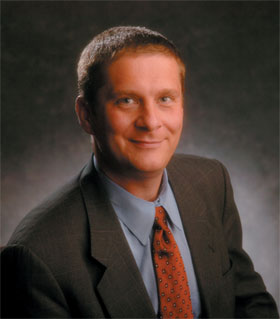
University of Rovira i Virgili is located in the Catalan cities of Tarragona and Reus, Spain. Its name is in honour of Antoni Rovira i Virgili.
Science and technology in Israel is one of the country's most developed sectors. Israel spent 4.3% of its gross domestic product (GDP) on civil research and development in 2015, the highest ratio in the world. In 2019, Israel was ranked the world's fifth most innovative country by the Bloomberg Innovation Index. It ranks thirteenth in the world for scientific output as measured by the number of scientific publications per million citizens. In 2014, Israel's share of scientific articles published worldwide (0.9%) was nine times higher than its share of the global population (0.1%).

Nederlandse Organisatie voor Toegepast Natuurwetenschappelijk Onderzoek is an independent research organisation in the Netherlands that focuses on applied science.

Graz University of Technology is one of five universities in Styria, Austria. It was founded in 1811 by Archduke John of Austria and is the oldest science and technology research and educational institute in Austria. It currently comprises seven faculties and is a public university. It offers 19 bachelors and 35 masters study programmes across all technology and natural science disciplines. Doctoral training is organised in 14 English-speaking doctoral schools. The university has more than 13,000 students, and approximately 2,000 students graduate every year. Science study programmes are offered in the framework of NAWI Graz together with the University of Graz.

Johannes Grenzfurthner is an Austrian artist, filmmaker, writer, actor, curator, theatre director, performer and lecturer. Grenzfurthner is the founder, conceiver and artistic director of monochrom, an international art and theory group and film production company. Most of his artworks are labeled monochrom.
The Small Business Innovation Research program is a U.S. government funding program, coordinated by the Small Business Administration, intended to help certain small businesses conduct research and development (R&D). Funding takes the form of contracts or grants. The recipient projects must have the potential for commercialization and must meet specific U.S. government R&D needs.

Emerging technologies are technologies whose development, practical applications, or both are still largely unrealized. These technologies are generally new but also include older technologies finding new applications. Emerging technologies are often perceived as capable of changing the status quo.

Rosalind Wright Picard is an American scholar and inventor who is Professor of Media Arts and Sciences at MIT, founder and director of the Affective Computing Research Group at the MIT Media Lab, and co-founder of the startups Affectiva and Empatica.

The Industrial Technology Research Institute is a technology research and development institution in Taiwan.

Science and technology in Canada consists of three distinct but closely related phenomena:

FH JOANNEUM is one of the biggest colleges of higher education in Austria. It has about 5,000 students and about 750 employees. The main campus is located in Graz and there are two additional locations in Kapfenberg and Bad Gleichenberg. All three are situated in the province Styria in Austria.

The Universalmuseum Joanneum is a multidisciplinary museum with buildings in several locations in the province of Styria, Austria. It has galleries and collections in many subject areas including archaeology, geology, paleontology, mineralogy, botany, zoology, history, art and folk culture. It is the oldest museum in Austria as well as the largest universal museum in central Europe with over 4.5 million objects in 13 departments and 12 locations in the Styrian cities of Graz, Stainz, Trautenfels, and Wagna. To reflect this status and its growth over the last two centuries, as well as to present a more recognizable image internationally, the Landesmuseum Joanneum was officially renamed to Universalmuseum Joanneum on 10 September 2009.

Science and technology in Switzerland play an important role in the Swiss economy, which has very few natural resources that are available in the country. The Swiss National Science Foundation, mandated by the Federal government, is the most important institute for promoting scientific research.
The Center for Information Technology Research in the Interest of Society and the Banatao Institute (CITRIS) is a research institute operated by the University of California to facilitate the real-world application of technological research. Approved in 2000, it is part of the Governor Gray Davis Institutes for Science and Innovation, along with the California Institute for Quantitative Biosciences, California Institute for Telecommunications and Information Technology, and the California Nanosystems Institute. Headquartered at UC Berkeley, CITRIS was founded in 2001 from a desire to see innovative technologies put to practical use in improving quality of life for people. CITRIS's partner campuses include UC Davis, UC Merced and UC Santa Cruz.
The Institute of Robotics and Intelligent Systems (IRIS) is part of the ETH Zurich, Switzerland. It replaced the existing Institute of Robotics, of the ETH Zurich in October 2002, when Prof. Bradley J. Nelson moved from the University of Minnesota, United States, to ETH Zurich and succeeded the Prof. Dr. Gerhard Schweitzer.

A powered exoskeleton, also known as power armor, powered armor, powered suit, cybernetic suit, cybernetic armor, exosuit, hardsuit, exoframe or augmented mobility, is a mobile machine that is wearable over all or part of the human body, providing ergonomic structural support and powered by a system of electric motors, pneumatics, levers, hydraulics or a combination of cybernetic technologies, while allowing for sufficient limb movement with increased strength and endurance. The exoskeleton is designed to provide better mechanical load tolerance, and its control system aims to sense and synchronize with the user's intended motion and relay the signal to motors which manage the gears. The exoskeleton also protects the user's shoulder, waist, back and thigh against overload, and stabilizes movements when lifting and holding heavy items.

Timothy J. Broderick, F.A.C.S., is Professor of Surgery and Biomedical Engineering at the University of Cincinnati, where he has served on the faculty since 2003. He also serves as Chief of the Division of Gastrointestinal and Endocrine Surgery and is Director of the Advanced Center for Telemedicine and Surgical Innovation (ACTSI). He has flown on the NASA KC-135 parabolic laboratory and dived in the NASA Extreme Environment Mission Operations (NEEMO) program to develop advanced surgical technologies for long duration space flight.

Dong Sun is a Chinese scientist in Hong Kong who is currently the Chair Professor and Head of the Department of Biomedical Engineering and Director of the Centre for Robotics and Automation at the City University of Hong Kong. He is also the Secretary for Innovation, Technology and Industry of the HKSAR Government. Sun is a pioneer in microrobotics and biomedical engineering, making numerous breakthroughs in robotic manipulation of cells for precision medicine.

Workplace robotics safety is an aspect of occupational safety and health when robots are used in the workplace. This includes traditional industrial robots as well as emerging technologies such as drone aircraft and wearable robotic exoskeletons. Types of accidents include collisions, crushing, and injuries from mechanical parts. Hazard controls include physical barriers, good work practices, and proper maintenance. Previous research showed that robot application is associated with an increase in the rate of occupational injuries in the first two years, and then becomes insignificant and even negative afterwards. Local governments can reduce or even eliminate the effect of robot application on occupational injuries by strengthening safety regulations. In addition, although local governments are keen on pushing robot application and industrial intelligence, the wide application of robots may impose a burden on the public health expenditure of local governments due to occupational injuries.
The Wyss Institute for Biologically Inspired Engineering is a cross-disciplinary research institute at Harvard University focused on bridging the gap between academia and industry by drawing inspiration from nature's design principles to solve challenges in health care and the environment. It is focused on the field of biologically inspired engineering to be distinct from bioengineering and biomedical engineering. The institute also has a focus on applications, intellectual property generation, and commercialization. The Wyss Institute is located in Boston’s Longwood Medical Area and has 375 full-time staff. The Wyss is organized around eight focus areas, each of which integrate faculty, postdocs, fellows, and staff scientists. The focus areas are bioinspired therapeutics & diagnostics, diagnostics accelerator, immuno-materials, living cellular devices, molecular robotics, 3D organ engineering, predictive bioanalytics and synthetic biology.















